The police killing of Stephon Clark in his grandmother's backyard stirred in the California legislator the same anger and "righteous indignation" expressed by protesters after his death in Sacramento in March."Immediately I wondered what motivated them to shoot this young man," Weber told CNN, adding that she didn't know how to feel about yet another fatal police shooting of an unarmed black man. "What could they have done otherwise?"The officers fired at Clark because they believed he was pointing a gun at them, police have said. But only his cellphone was found at the scene.Before Clark's death, Weber had been thinking about the issue. California had 138 deadly police-involved shootings in 2016, and 162 deadly shootings in 2017, according to data compiled by The Washington Post. In April, Weber amended and reintroduced a bill about police force that she had co-authored the previous year. Assembly Bill 931 would raise the standard for when officers can use deadly force from "reasonable" to "necessary" — meaning the officer has no other alternative to protect him or herself or another from death or serious injury.The bill immediately stirred controversy. While supporters say it's necessary to prevent harm to the public, opponents — including police groups — say it puts officers who have to make split-second decisions at risk.The legislative session wrapped up before the issue could be brought to a vote, but discussions are expected to resume this fall.If the bill becomes law, it wouldn't be the first. Between 2014 and 2017, at least 16 states enacted legislation addressing the use of force by officers, according to the National Conference of State Legislatures.The laws come amid increasing reports of police overreach and abuse, often at the expense of people of color. But it's an issue that cannot be easily solved through legislation.
Use of force has yet to be defined
There's "no single, universally agreed-upon definition of use of force," according to the National Institute of Justice, a research branch of the Justice Department.So it's left to each of the nearly 18,000 police agencies in the United States to make their own policies on the matter — if they choose to address it at all."To an extent, the local departments do whatever the hell they want," said Seth W. Stoughton, assistant professor of law at the University of South Carolina School of Law. 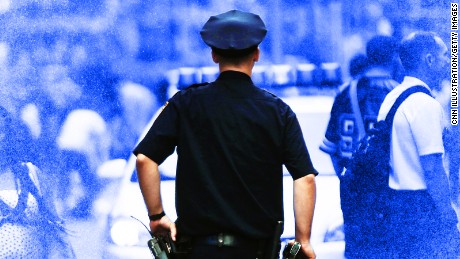 They take their cue from what the Justice Department calls a use-of-force continuum — an escalating series of actions officers could take to resolve a situation. These actions include officer presence, verbal warnings (yelling "stop"), unarmed control (grabs and holds), less lethal weapons (chemical sprays and batons) and, ultimately, lethal force.The key, police and activists say, is trying to keep a confrontation from escalating. And officers — who operate in high-stress environments — should avoid making split-second decisions on force whenever possible, said Geoffrey Alpert, a criminology and criminal justice professor at the University of South Carolina."That's the point of training," Alpert said. "You want to try to calm things down in an encounter."Experts cite a couple of US Supreme Court decisions, including the landmark Graham v. Connor ruling in 1989, as setting the standard for using force. Justices said using force is acceptable if it is "objectively reasonable" — in other words, if another officer in similar circumstances would have acted the same way.Force crosses into the excessive category when there is no threat to an officer, according to Clarence E. Cox III, former national president of the National Organization of Black Law Enforcement Executives.Such a claim is being made by NBA player Sterling Brown, who was pulled to the ground, shocked with a stun gun and arrested in January after an altercation with Milwaukee police officers stemming from an alleged parking violation.Bodycam footage shows the situation escalated into a confrontation in a matter of seconds. But Brown remained composed. His tone was calm even as he questioned the level of force officers employed. As a result of their interaction with Brown, nearly a dozen officers were disciplined or ordered to undergo training.It's impossible to say how many people experience situations similar to Brown's, as there's also no official national record."There is no national database of officer-involved shootings or incidents in which police use excessive force. Most agencies keep records, but no mechanism exists to produce a national estimate," according to the National Institute of Justice.The FBI is trying to do something about it, saying the effort will provide important data to the debate over how police officers use force.
They take their cue from what the Justice Department calls a use-of-force continuum — an escalating series of actions officers could take to resolve a situation. These actions include officer presence, verbal warnings (yelling "stop"), unarmed control (grabs and holds), less lethal weapons (chemical sprays and batons) and, ultimately, lethal force.The key, police and activists say, is trying to keep a confrontation from escalating. And officers — who operate in high-stress environments — should avoid making split-second decisions on force whenever possible, said Geoffrey Alpert, a criminology and criminal justice professor at the University of South Carolina."That's the point of training," Alpert said. "You want to try to calm things down in an encounter."Experts cite a couple of US Supreme Court decisions, including the landmark Graham v. Connor ruling in 1989, as setting the standard for using force. Justices said using force is acceptable if it is "objectively reasonable" — in other words, if another officer in similar circumstances would have acted the same way.Force crosses into the excessive category when there is no threat to an officer, according to Clarence E. Cox III, former national president of the National Organization of Black Law Enforcement Executives.Such a claim is being made by NBA player Sterling Brown, who was pulled to the ground, shocked with a stun gun and arrested in January after an altercation with Milwaukee police officers stemming from an alleged parking violation.Bodycam footage shows the situation escalated into a confrontation in a matter of seconds. But Brown remained composed. His tone was calm even as he questioned the level of force officers employed. As a result of their interaction with Brown, nearly a dozen officers were disciplined or ordered to undergo training.It's impossible to say how many people experience situations similar to Brown's, as there's also no official national record."There is no national database of officer-involved shootings or incidents in which police use excessive force. Most agencies keep records, but no mechanism exists to produce a national estimate," according to the National Institute of Justice.The FBI is trying to do something about it, saying the effort will provide important data to the debate over how police officers use force. The agency launched a National Use of Force Data Collection initiative in 2017. Currently, agency participation is "entirely voluntary." Since 2015, The Washington Post has maintained its own database of people shot and killed by police. The database shows that police shot and killed 987 people in 2017 — up from 963 shot and killed the year before.Some police organizations, including the National Law Enforcement Officers Memorial Fund, keep track of officer fatalities."It's a national embarrassment that we don't even know how many times police shoot people," said Alpert.Cox says he believes the data could actually help vindicate law enforcement."I'd love to show empirical data that shows we're not killing folks as much as people think," he said.
The agency launched a National Use of Force Data Collection initiative in 2017. Currently, agency participation is "entirely voluntary." Since 2015, The Washington Post has maintained its own database of people shot and killed by police. The database shows that police shot and killed 987 people in 2017 — up from 963 shot and killed the year before.Some police organizations, including the National Law Enforcement Officers Memorial Fund, keep track of officer fatalities."It's a national embarrassment that we don't even know how many times police shoot people," said Alpert.Cox says he believes the data could actually help vindicate law enforcement."I'd love to show empirical data that shows we're not killing folks as much as people think," he said.
This lack of clarity has real-world implications
An officer fatally shot Alton Sterling, a black man, in an encounter that took less than 90 seconds.On that July evening in 2016, Officers Howie Lake and Blane Salamoni pulled up to the Triple S Food Mart in Baton Rouge, Louisiana, within seconds of each other.Things went south quickly as they approached Sterling, who was selling CDs and DVDs from a table and allegedly had been threatening someone with a gun. "They perceived the threat differently," Police Chief Murphy Paul said of the officers' actions at a news conference in March. Lake tried to de-escalate the situation, according to the chief, while Salamoni quickly pulled his gun and shouted profanities at Sterling.Within 90 seconds of the officers' arrival and after a struggle that led to police gunfire, a dying Sterling was on the ground, his red shirt soaked with blood. State authorities this spring declined to prosecute the officers, saying their use of force was justified.But their boss was having none of that. He suspended Lake for three days for losing his temper and fired Salamoni, who pulled the trigger, for violating the department's policies on force.Paul said officers shouldn't act based on "unreasonable fear.""Rather, an officer needs to respond with awareness of a situation and the ability to effectively and rationally evaluate the situation and its appropriate response," Paul said.Police are generally opposed to laws that specifically tell them how to employ force or certain tactics. Such dictates could slow the resolution of a dangerous situation or ultimately prove deadly to officers, they say.Such was the case when a Chicago police officer was beaten by a man during an arrest in October 2016. The man, Parta Huff, was reportedly under the influence of PCP when he crashed his car into a liquor store. When officers arrived at the scene, Huff refused to comply with their orders and was combative. During a struggle with police that began after officers approached him using aggressive language and then shocked him with a stun gun, he beat a female officer who suffered a concussion, as well as shoulder, wrist and neck injuries. The incident gained widespread attention when Police Superintendent Eddie Johnson said the female officer did not shoot Huff, out of fear of scrutiny."As I was at the hospital last night visiting with her, she looked at me and said she thought she was going to die," Johnson said. "She knew that she should shoot this guy, but she chose not to because she didn't want her family or the department to have to go through the scrutiny the next day on the national news."Supporters and opponents of Weber's bill in California point to these cases and others to make their points about the benefits and risks of regulating police force.California Assembly Bill 931 would authorize officers to use deadly force "only when it is necessary to prevent imminent and serious bodily injury or death — that is, if, given the totality of the circumstances, there was no reasonable alternative to using deadly force, including warnings, verbal persuasion, or other nonlethal methods of resolution or de-escalation," according to Weber. While advocates say such a law could save lives, some California police officers disagree.Ronald Lawrence, chief in Citrus Heights, told The Sacramento Bee that requiring officers to move through a "litany" of options — especially when a suspected is armed — before resorting to deadly force "is irresponsible." Chuck Canterbury, national president of the Fraternal Order of Police, shared a similar sentiment, saying there's no way to have a standard when it comes to using force "because every situation is different." "Police officers are charged with protecting their life and other lives, so an officer has to be able to use whatever force necessary to effect the arrest safely," he said.Compounding the matter, police officers accused of using excessive force are rarely convicted. State laws vary, but the federal statute used to evaluate police shootings requires a finding that the officer willfully or intentionally sought to kill someone.
While advocates say such a law could save lives, some California police officers disagree.Ronald Lawrence, chief in Citrus Heights, told The Sacramento Bee that requiring officers to move through a "litany" of options — especially when a suspected is armed — before resorting to deadly force "is irresponsible." Chuck Canterbury, national president of the Fraternal Order of Police, shared a similar sentiment, saying there's no way to have a standard when it comes to using force "because every situation is different." "Police officers are charged with protecting their life and other lives, so an officer has to be able to use whatever force necessary to effect the arrest safely," he said.Compounding the matter, police officers accused of using excessive force are rarely convicted. State laws vary, but the federal statute used to evaluate police shootings requires a finding that the officer willfully or intentionally sought to kill someone.
It's causing problems in communities of color
In recent years, the numerous high-profile killings of people of color have intensified the rift between police departments and the communities they're sworn to protect.And in the absence of empirical data or a universal definition of force, police are ill-equipped to argue that the incidents are outliers.This is especially true in the case of black men, who, from 2010 to 2014, were nearly three times as likely to be killed by legal intervention than white men, according to a study published in the American Journal of Public Health. 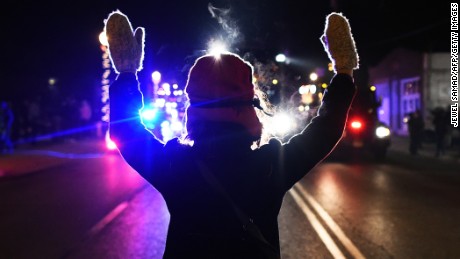 The rift widens with every new high-profile police shooting of an unarmed person of color.Sonia Lewis, chapter leader of Black Lives Matter Sacramento and a cousin of Stephon Clark, said she believes that when police are called, most of the time "they're not problem solvers, they make the problem."Activists point to cases like that of Danny Ray Thomas. In March, Houston-area police spotted Thomas standing in a busy intersection with his pants around his ankles. He was reportedly talking to himself and hitting cars as they drove by. After Thomas did not respond to commands to stop, an officer shot him in the chest. Thomas was taken to a hospital, where he died.Police say the officer feared for his safety. Family members say Thomas posed no danger, wasn't in the right mental state and could have been stopped without lethal force."This isn't about police using force to defend themselves; it's about them using lethal force when they don't have to," Patrisse Cullors, co-founder of the Black Lives Matter movement, said of many shootings.Cat Brooks, co-founder of the California-based Anti Police-Terror Project, puts it bluntly: "Policing as an institution does not work for communities of color across the country."Mayors and police chiefs in several cities are trying to reduce the tension."It's essential that when this community interacts with our officers, they are treated with the utmost professionalism, no matter the situation," said Ramon Batista, police chief in Mesa, Arizona. After his department came under intense scrutiny following the release of two videos showing violent arrests, he asked an outside investigator to examine its force policies and training. Police groups say an increased sense of activism, amateur video capturing officers' every move and more frequent media coverage is having an impact on how they do their jobs."Officers are more timid now. They're not scared to do their job. They're scared of being prosecuted for a false narrative," said Canterbury of the Fraternal Order of Police.Having timid officers could lead to slower response times, which put the lives of officers and the public in danger, police groups say.
The rift widens with every new high-profile police shooting of an unarmed person of color.Sonia Lewis, chapter leader of Black Lives Matter Sacramento and a cousin of Stephon Clark, said she believes that when police are called, most of the time "they're not problem solvers, they make the problem."Activists point to cases like that of Danny Ray Thomas. In March, Houston-area police spotted Thomas standing in a busy intersection with his pants around his ankles. He was reportedly talking to himself and hitting cars as they drove by. After Thomas did not respond to commands to stop, an officer shot him in the chest. Thomas was taken to a hospital, where he died.Police say the officer feared for his safety. Family members say Thomas posed no danger, wasn't in the right mental state and could have been stopped without lethal force."This isn't about police using force to defend themselves; it's about them using lethal force when they don't have to," Patrisse Cullors, co-founder of the Black Lives Matter movement, said of many shootings.Cat Brooks, co-founder of the California-based Anti Police-Terror Project, puts it bluntly: "Policing as an institution does not work for communities of color across the country."Mayors and police chiefs in several cities are trying to reduce the tension."It's essential that when this community interacts with our officers, they are treated with the utmost professionalism, no matter the situation," said Ramon Batista, police chief in Mesa, Arizona. After his department came under intense scrutiny following the release of two videos showing violent arrests, he asked an outside investigator to examine its force policies and training. Police groups say an increased sense of activism, amateur video capturing officers' every move and more frequent media coverage is having an impact on how they do their jobs."Officers are more timid now. They're not scared to do their job. They're scared of being prosecuted for a false narrative," said Canterbury of the Fraternal Order of Police.Having timid officers could lead to slower response times, which put the lives of officers and the public in danger, police groups say.
But things can be done to institute change
Instituting a universal definition of force and keeping better records would clarify how big of a problem police use of force actually is, which, in turn, could inform future legislation that improves public safety and offers more protection to the most vulnerable in society.In the meantime, there are steps that can be taken to reduce violence and tension.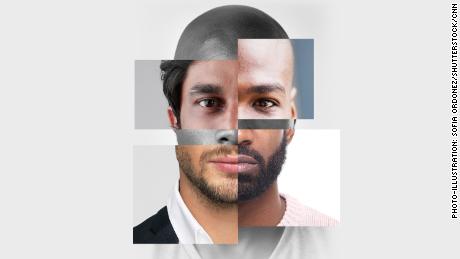 To start with, police and activists agree that officers need enhanced training and higher recruiting standards. Police groups say higher pay would help as well. "Higher pay will attract candidates that would otherwise go into the private sector," Canterbury said. He added that training can only help reduce mistakes, not eliminate them.More importantly, experts say, there needs to be a change in culture with regards to policing.Christy Lopez, a law professor at Georgetown University, has worked with the Justice Department on 23 investigations looking at ways to improve police culture. She says departments have to look at what type of approach — a guardian or warrior — their officers typically use toward the public.A guardian approach, Lopez says, looks at police as protectors within the community, whereas a warrior approach generally sees neighborhoods as a battlefield with police on one side and the bad guys on the other.
To start with, police and activists agree that officers need enhanced training and higher recruiting standards. Police groups say higher pay would help as well. "Higher pay will attract candidates that would otherwise go into the private sector," Canterbury said. He added that training can only help reduce mistakes, not eliminate them.More importantly, experts say, there needs to be a change in culture with regards to policing.Christy Lopez, a law professor at Georgetown University, has worked with the Justice Department on 23 investigations looking at ways to improve police culture. She says departments have to look at what type of approach — a guardian or warrior — their officers typically use toward the public.A guardian approach, Lopez says, looks at police as protectors within the community, whereas a warrior approach generally sees neighborhoods as a battlefield with police on one side and the bad guys on the other.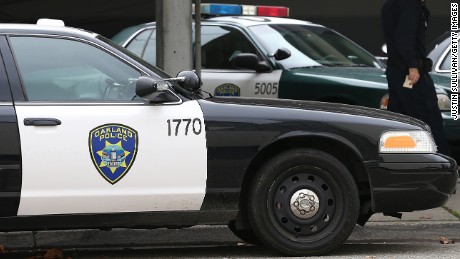 "When police conduct themselves in this manner in these communities, these communities feel police are not on their side and they're not there to protect them," she said of the warrior approach.This leads to "a cycle where people are rude to police" because they feel oppressed, and police, in turn, feel disrespected or unappreciated, Lopez said.During an announcement in which Paul, the Baton Rouge police chief, disciplined officers in the death of Sterling, he said dangerous situations could be defused if community members just complied with officers' commands."Treat our police officers with the respect that their position deserves," he said. "Please stop resisting. Stop running. When a police officer gives you direction, listen. Follow his directives. Listen to his instructions."But activists are quick to point out that wasn't the case in the police shooting of Philando Castile, who appeared to comply with police orders during a traffic stop on July 6, 2016. Officer Jeronimo Yanez, who shot Castile, said he believed Castile was reaching for his firearm, which the officer told him not to do. Before dying, Castile said he was reaching for his wallet to retrieve his permit to carry. Yanez was tried for the killing, but was found not guilty of second-degree manslaughter. He was also acquitted of two counts of intentional discharge of a firearm that endangers safety. The New Orleans Police Department is an example of an agency making great strides — albeit under a consent decree."It was considered the worst police department in the country, especially after (Hurricane) Katrina," Lopez said.The Justice Department investigated the police department in 2011 and found it engaged in patterns of misconduct, including racial bias. In June, a Justice Department attorney said the police department had made great strides in cleaning up its act."It really is astounding to me compared to where we came from during the investigation," DOJ Civil Rights Division attorney Emily Guston told The Times-Picayune. She described it as "a completely different department. We are now seeing the markers of true culture change."Chicago is looking to make similar changes in its department. In July, city officials announced a draft consent decree nearly one year after the state attorney general filed a lawsuit claiming a "pattern of using excessive force" and other discriminatory misconduct against Chicago's African-American and Latino residents.
"When police conduct themselves in this manner in these communities, these communities feel police are not on their side and they're not there to protect them," she said of the warrior approach.This leads to "a cycle where people are rude to police" because they feel oppressed, and police, in turn, feel disrespected or unappreciated, Lopez said.During an announcement in which Paul, the Baton Rouge police chief, disciplined officers in the death of Sterling, he said dangerous situations could be defused if community members just complied with officers' commands."Treat our police officers with the respect that their position deserves," he said. "Please stop resisting. Stop running. When a police officer gives you direction, listen. Follow his directives. Listen to his instructions."But activists are quick to point out that wasn't the case in the police shooting of Philando Castile, who appeared to comply with police orders during a traffic stop on July 6, 2016. Officer Jeronimo Yanez, who shot Castile, said he believed Castile was reaching for his firearm, which the officer told him not to do. Before dying, Castile said he was reaching for his wallet to retrieve his permit to carry. Yanez was tried for the killing, but was found not guilty of second-degree manslaughter. He was also acquitted of two counts of intentional discharge of a firearm that endangers safety. The New Orleans Police Department is an example of an agency making great strides — albeit under a consent decree."It was considered the worst police department in the country, especially after (Hurricane) Katrina," Lopez said.The Justice Department investigated the police department in 2011 and found it engaged in patterns of misconduct, including racial bias. In June, a Justice Department attorney said the police department had made great strides in cleaning up its act."It really is astounding to me compared to where we came from during the investigation," DOJ Civil Rights Division attorney Emily Guston told The Times-Picayune. She described it as "a completely different department. We are now seeing the markers of true culture change."Chicago is looking to make similar changes in its department. In July, city officials announced a draft consent decree nearly one year after the state attorney general filed a lawsuit claiming a "pattern of using excessive force" and other discriminatory misconduct against Chicago's African-American and Latino residents.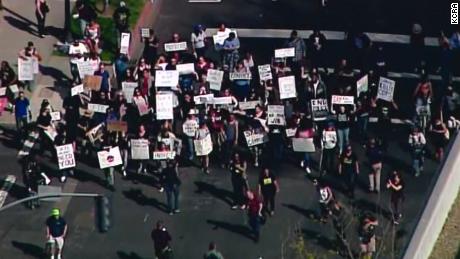 The Justice Department investigated 11 other law enforcement agencies between 2009 and 2015. It found that five of those agencies had engaged in a "pattern or practice" of using excessive force. It was during this time that then-President Barack Obama created the President's Task Force on 21st Century Policing, which led to recommendations on the use of force.Sue Rahr was part of the task force and is now the executive director of the Washington State Criminal Justice Training Commission.Rahr says adequate training and a change in culture go hand in hand. Trainers must instill principles of control and de-escalation of a confrontation, she said. Regarding the latter, officers might speak in quieter tones, turn off their patrol car's lights and sirens or use a person's name."We focus on treating the person as human, as opposed (to) an enemy," she said.Weber, the California assemblywoman who favors the tougher "necessary" force standard, believes the change proposed in her Assembly Bill 931 could be part of that change in culture and even have national implications, should it become law."It really gets to the heart of the problem," she said. "This bill should save lives."
The Justice Department investigated 11 other law enforcement agencies between 2009 and 2015. It found that five of those agencies had engaged in a "pattern or practice" of using excessive force. It was during this time that then-President Barack Obama created the President's Task Force on 21st Century Policing, which led to recommendations on the use of force.Sue Rahr was part of the task force and is now the executive director of the Washington State Criminal Justice Training Commission.Rahr says adequate training and a change in culture go hand in hand. Trainers must instill principles of control and de-escalation of a confrontation, she said. Regarding the latter, officers might speak in quieter tones, turn off their patrol car's lights and sirens or use a person's name."We focus on treating the person as human, as opposed (to) an enemy," she said.Weber, the California assemblywoman who favors the tougher "necessary" force standard, believes the change proposed in her Assembly Bill 931 could be part of that change in culture and even have national implications, should it become law."It really gets to the heart of the problem," she said. "This bill should save lives."
CNN's Phil Gast contributed to this report.
Original Article
[contf] [contfnew] 
CNN
[contfnewc] [contfnewc]






